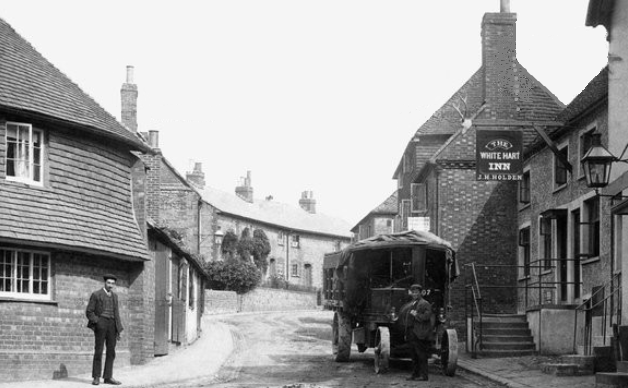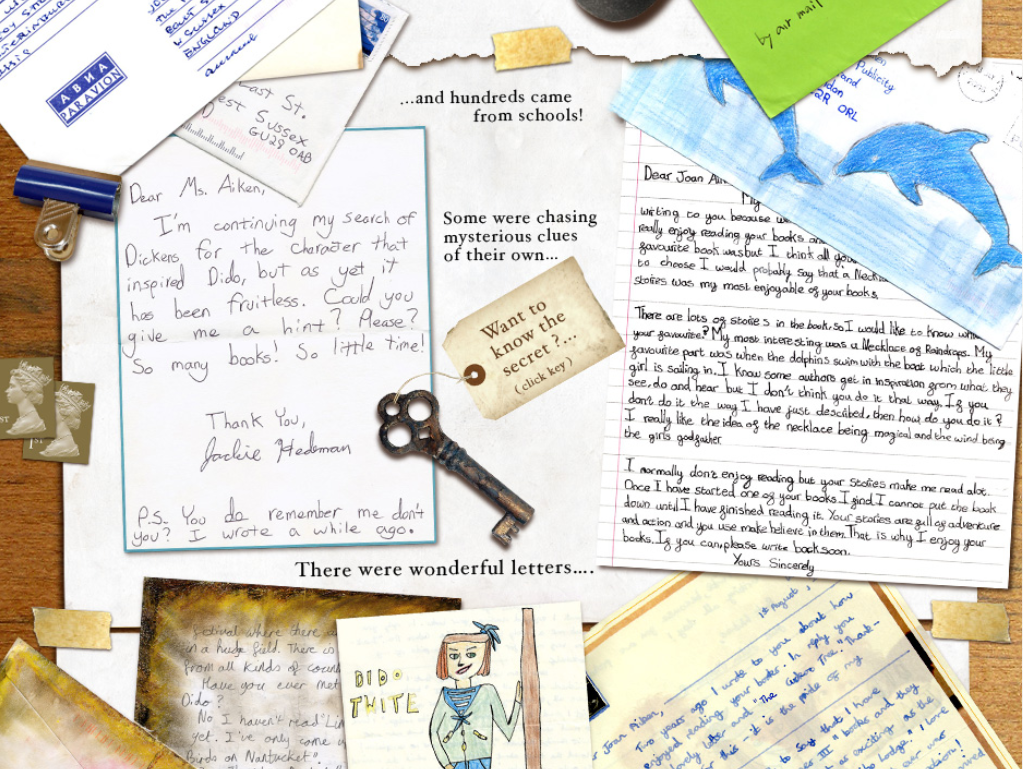
Dido Twite was Joan Aiken’s unforgettable and irrepressible heroine, the ‘brat’ turned child Odysseus, friend to the lonely and unlucky, heroic saviour (many times over!) of her King and country and a much loved inspiration of readers of The Wolves Chronicles. The character first appears in the second of these books – Black Hearts in Battersea, and from her humble beginnings, goes on to rule the series almost from the moment when she first accosts its other hero, the newly arrived art student Simon leading his donkey Caroline up to the Twite’s house in London’s Rose Alley:
“She was a shrewish-looking little creature of perhaps eight or nine, with sharp eyes of a pale washed-out blue and no eyebrows or eyelashes to speak of. Her straw-coloured hair was stringy and sticky with jam and she wore a dirty satin dress two sizes too small for her.”
But readers may not know that there was a real life model for the character of Dido Twite, who thrust herself into Joan Aiken’s life in much the same way as the fictional character appears in the book…
In 1957, wanting to create a permanent home for herself after she was widowed with two small children, Joan borrowed £300 from her mother and put a deposit on White Hart House, a semi-derelict Tudor ex-pub in the little town of Petworth, five miles from the little Sussex village where she still lived and where Joan had grown up; Joan Aiken had to sign an undertaking not to sell liquor as the town already had so many other pubs, so the pub sign came down.

On moving-in day, supplied with £50 worth of furniture from a local auction and a good many orange crates, the family were met outside their new home by a nosey small girl who looked just like Dido as she is described above. Sitting on the steps up to their house, barefoot and enjoying a slice of bread and jam, she was keen to investigate and interrogate the new neighbours. It turned out she was completely intrepid and had the run of the town, and from then on would arrive at all hours to chat with Joan, endlessly curious, and full of tall tales about running on the town’s rooftops, sailing around the world on voyages, or being educated by a governess with the local gentry at Petworth House, most of which turned out to be true!
After the book that this small girl had inspired was written and published with its rather mysterious ending, Joan Aiken famously told of the many agonised letters she received from fans who having finished Black Hearts in Battersea, were aghast to discover that their newly found heroine had disappeared at sea. Realising she couldn’t drown such a magnetic character, Joan Aiken decided to have Dido picked up by a whaling ship, bound for the island of Nantucket off the coast of New England, original home of many of Joan’s own ancestors, and so the young Dido was sent off on her extraordinary series of adventures.

Over the years curiosity about Dido Twite brought more questions and fan letters, and writing to one particularly persistent young American reader, Joan Aiken gave another mysterious clue about Dido’s origins.
The meeting with the bold child in the street had struck a literary chord for her, recalling another diminutive eccentric from a Dickens novel, whose language and manners Joan Aiken couldn’t resist combining with the forthright attitude of the neighbour’s small daughter, a character who might well have lived during the reign of her own invented good King James lll. But who was this other mysterious child, and in which of Dickens’ many novels did she appear?

An illustration by ‘Phiz’ and perhaps an inspiration for the Twite Family?
Little did Joan Aiken know that setting this rather teasing puzzle was to send her faithful fan off on a long course of reading, and started a correspondence between the two of them which was to last until the end of Joan’s life.
Finding these letters after Joan Aiken’s death set off another quest – how to bring this almost impossible mystery to an end and send a message without spoiling the story for new readers? In the end the answer was to post some of the letters on the newly created Joan Aiken website, together with a key to the Dickens mystery and leave the internet to work its magic, which it did in more ways than one…

One day, the American Dido fan looking up her favourite author found the page, recognised her own letter and was able to get in touch; she even came to visit on a trip to London and saw her original letters, carefully kept by Joan Aiken through the years.
Also via the website, an old friend from those Sussex days, now living in Australia, was able to contact that small girl from Petworth who had also moved there, and nearly sixty years later she came from Australia to visit, and only then learned how she had inspired Joan Aiken’s fictional heroine. She now has grandchildren, and went off, armed with books to share Dido’s adventures, and early inspiration with them for the first time.
More magical Aiken serendipity meant that this second visit happened on the very same day when the American reader, now grown up and fulfilling her dream of becoming a writer herself, had posted an essay online about her long search for Dido Twite:
Readers have also speculated that Dido Twite could be an alter ego for Joan Aiken herself, which does ring true; certainly Dido gets to have all the adventures Joan imagined as a small girl – sailing on whaling ships, climbing the mountains of South America, visiting the mysterious Island of the Pearl Snakes, putting spokes in the wheels of various villains, and even inhabiting the pages of novels by her favourite authors, such as Dickens. The character of Dido was the embodiment of many of that small girl’s dreams, and would go on to encourage others to be bold and follow their dreams as well.
* * * * *
Many illustrators have tried to capture Dido – these pictures above are from American editions of Wolves Chronicles drawn by Robin Jacques
Want to know the answer to that Dickens secret? Click here for the Letters page!
More posts about Dido Twite and her adventures are here
Lovely to read this. Goodness a real Dido Twite in Petworth! That apparently sleepy town had a lot of secrets.
LikeLike
…and extraordinary being able to meet her again after all this time!
LikeLike
Just brilliant to find out the ‘secret’. Thanks Lizza.
LikeLiked by 1 person
Imagine if she had hooked up with Alice Liddell. They would have had, oh, such a kiki!
LikeLike
Ha! A lovely word…Dido would probably approve.
LikeLiked by 1 person
I could say something here about Dido being a perfect feminist heroine for our time, but although that’s true, I don’t think we need to dip too deeply into that. Classic Aiken though, with Dido’s refusal to be sweet, feminine or gentle. Dido has been a good friend to me in my conflicted childhood years. Love this article, thank you.
LikeLike
Aaaah.
Yes, although she was always honest, perhaps the closest Dido gets to actually expressing her feelings is turning a bit gruff…
My favourite Dido quote is from The Stolen Lake when she says;
“Oh why do I have to feel sorry for people all the time, however nasty they are?”
(And that was about the terrifying Queen Ginevra!)
LikeLike
Pingback: Croopus…It’s March the First – Happy Dido Twite Day! | Joan Aiken
Such a wonderful set of interlocking Dido stories! I’m utterly charmed to hear that there was a real-life inspiration for Dido in Petworth.
LikeLiked by 1 person
Yes, and it seems incredible now that the little girl next door never knew she was the inspiration! I suppose Joan felt it might change their happy uninhibited relationship if she found out. So funny to meet her again years later, and Joan’s other correspondent too…they felt like old friends.
LikeLiked by 1 person